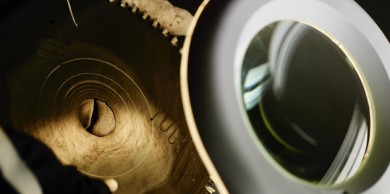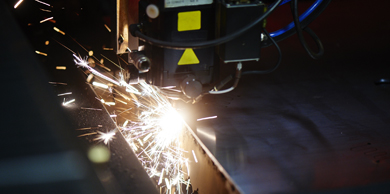
-Choose a saw blade with more teeth.
-Use a higher peripheral speed.
-Select a saw blade with different tooth shape.
-Check flanges and distances.
-Condition of the spindle bearings.

-The blade goes into oscillation (self-vibration).
-Change number of teeth and diameter.
-Adjust the speed of revolution if possible.
-You can also choose a sound absorbing saw blade.
-A coating of sound absorbing material on the inside of the safety cover.

-Use a saw blade with more teeth.
-The saw blade is positioned too high above the material.
-Some special grindings and angles may help.

-During cutting the saw blade becomes warm, especially in the periphery, which
causes the blade to expand and stretch. We can add slots for improved blade
properties to meet a specific customer’s needs.

-When using manual feed, a negative hook angle results in a softer cut.
-Positive hook angle is recommended if automatic feed is used. A blade with more
teeth results in a softer cutting.
“Want to express our gratitude for your quick delivery and technical solution, as our customer had technical problems in the production of a new product.”
“Our client is so pleased with the new Highline Board Plus blades, running times and the cutting performance is excellent.”
“On our customer's desire, we would like to extend a big thank you for a perfect delivery associated with the startup of our client's new Veisto HewSaw R200 sawing line.”
“With the new High Line Trim Plus saw blade, our customer has finally gotten the cutting performance that he wished for many years and after several tests.”